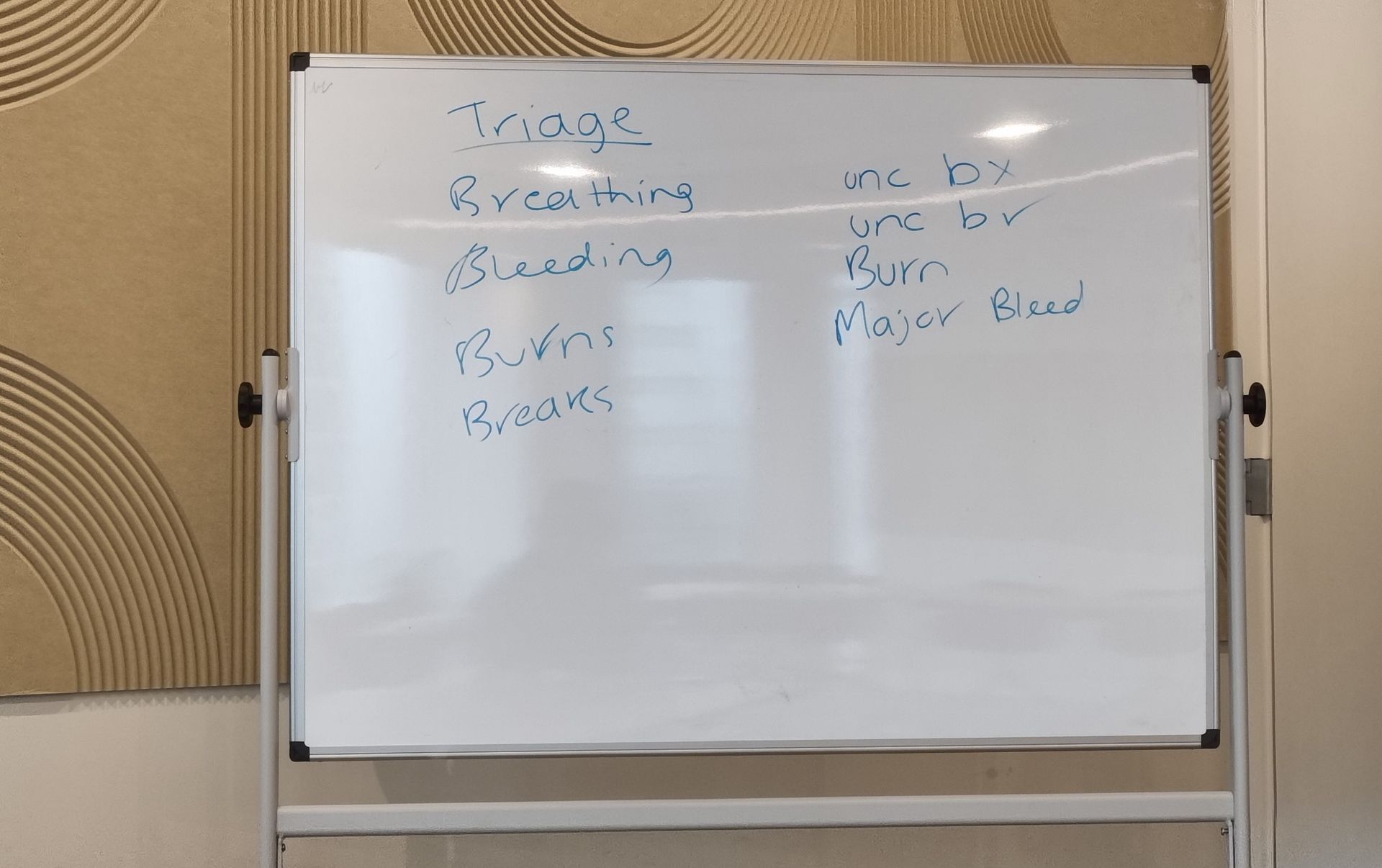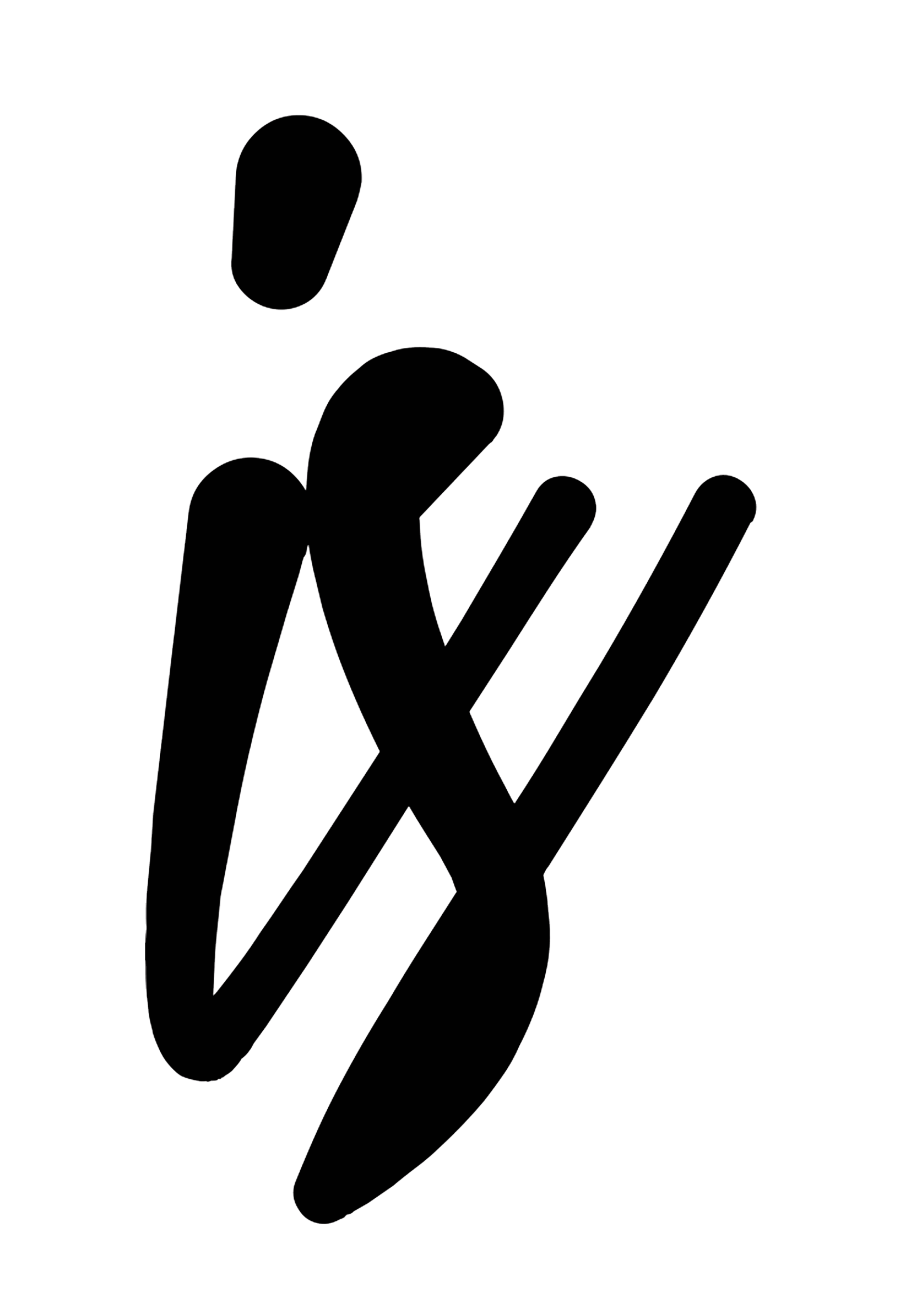05/05/25 |
The Power of Presence: How First Aid Training Changed My Perspective
|
Are you interested in becoming a First Aider? I know — awkward silence.
Sounds good on paper, but when you stop and really process everything, being a First Aider means you could find yourself in some truly distressing, downright scary situations. That’s a big responsibility, but one I’ve grown to feel is worth it. There’s something very prideful — and, without being too sentimental, very beautiful — about being in a position to help someone in need; to be the calm voice of reason or the comforting arm to hold on to. That’s the mindset I carried with me for this year’s First Aid training: a mix of nerves, duty, and a quiet sense of purpose.
Speaking of purpose. Mine came in the form of a calendar invite, a promise of a Pret lunch, and the hope that TFL wouldn’t betray me.
On 21st March, I scurried out of bed, made a dash for the bathroom, got dressed, then headed out of my front door to catch the bus to the station — which, according to the Bus Times app, was arriving in less than five minutes. I caught it just in time (hallelujah). I live in an area serviced by three train stations, yet the distance from my flat to each one is around a 15–20-minute bus ride. Not ideal even on the best of days — though I suppose that’s the price one pays for wanting a quieter area to live in. A classic case of,
“you can take the girl out of inner-city London but…” — I’m confident you know how that sentence ends.
Seventy minutes later — past the revolving doors, through the lobby lanes, and up the escalator to the mezzanine level — I patiently waited for the lift to the 14th floor, where the First Aid training was taking place. I’m not sure if I’ve mentioned this in previous blog posts, but I’m a Lifestyle Writer at heart and a Tech Service Desk Analyst by day. One moment I’m reviewing mocktails, the next I’m walking colleague through how to perform a hardware reset on their frozen laptop — it’s a bit of a double life. Having worked with my company for five years now, this wasn’t my first First Aid training. I had taken the course a few years back, so when the opportunity came round again and my Manager asked if I was happy to remain a First Aider, I gladly reaffirmed my commitment.

Having completed training a year earlier, I had some preconceived ideas of what to expect: a mix of practical activities, a bit of theory, and an assessment at some point. What did take me by surprise, however, was how young our trainer, Akmal Khan, appeared. Akmal is a Freelance First Aid Instructor affiliated with Siren Training and was delivering the course on their behalf. I’d guessed he was in his early twenties based on looks alone. But when he spoke, he had the clarity and confidence of a seasoned secondary school teacher — the “no-nonsense” type. That energy would become central to our day, as Akmal reminded us how critical every second is in an emergency. His words stuck with me: “Every second counts in a life-threatening situation. Don’t hesitate — just act.” That reminder stayed with me as we dived into the key information and steps all First Aiders need to know when assessing a casualty.
The areas we covered in the training included:
DR A B C
Read MoreDR A B C stands for Danger, Response, Airway, Breathing, and Circulation. This process helps First Aiders...
First Aid Kits
Read MoreThe 4 1 1 - these are the items that should always be in a First Aid kit...
EpiPen Use and UK Regulations
Read MoreAn EpiPen is a life-saving medical device used to treat severe allergic reactions — also known as anaphylaxis. An EpiPen gives a quick shot of...
CPR
Read MoreCPR stands for cardiopulmonary resuscitation. It combines chest compressions and rescue breaths to give a person the best chance of survival following a...
Burns
Read MoreBurns occur when excessive dry heat damages the skin. There are three different types of Burns a casualty can have...
Shock
Read MoreShock is a serious condition that occurs when your body doesn’t get enough blood flow. Lack of blood flow to your organs means...
Seizures
Read MoreSeizures involve sudden, temporary, bursts of electrical activity in the brain that change or disrupt the way messages are sent between...
Bleeding
Read MoreTypes of bleeds and what to expect:
Arteries: Bleeding will be bright red and...
According to the 2023/24 Health and Safety Executive Annual Report, 1.7 million workers in Great Britain reported work-related ill health, with 33.7 million working days lost due to illness and injury. 33.7 million — let that sink in. It’s a sobering reminder of how essential First Aid knowledge really is, not just in the workplace, but in everyday life. When you hear figures like that, it really brings home the reality that emergencies don’t just happen in films or on the evening news — they can (and do) happen in the most ordinary settings: at your desk, in the stairwell, during a coffee break.
Being trained in First Aid means you’re not just hoping someone else knows what to do — you are that someone. And that sense of readiness, even if it’s just knowing how to stay calm while assessing DR ABC, suddenly feels less like a workplace checkbox and more like a life skill worth holding onto. That said, it’s a lot easier said than done. Let’s be honest — being a First Aider is a big responsibility. If a colleague becomes unwell and you’re the one present, it falls to you to help keep them in a stable condition until emergency services arrive. That’s a heavy responsibility.
What I find reassuring is that in most situations, three basic steps — staying calm, checking the area is safe, and calling for help — can make all the difference. And if in doubt, help is just a phone call away. Emergency services can guide you through the steps. The real confidence of a First Aider doesn’t come from knowing everything, but from staying calm, assessing the situation, and knowing when to ask for help. That alone can be lifesaving.
That sense of steady presence reminds me of our trainer, Akmal — calm, clear, and quietly confident. During our lunch break, I had the chance to speak with him one-on-one. Akmal didn’t just teach First Aid — he lived it.
“My dad trained my mum about 10 years ago, and they used to teach me when I was little,” he explained. That early start sparked something deeper in him. After facing setbacks in his first round of university applications, Akmal reapplied for medicine at several well-known institutions — and was successful second time around.
“At first, I felt I might be punching above my weight, but I’m glad I pushed through,” he said, smiling. He’s accepted a place at
King’s College London, thrilled to be joining their network.
“The King’s network — Guy’s and St Thomas’ Hospitals — is unbeatable. I can’t wait to start.”
Akmal’s journey — from learning CPR at home to teaching others while preparing to become a doctor — is quietly powerful. As he reminded us, “Your first responsibility in First Aid is always to yourself. Never put yourself in danger to help someone else — because you’ll just become another casualty.”
A few spoonfuls of tuna salad and an oatmeal raisin cookie later, we reached the end of the training.
You’ll be pleased to know that my colleagues and I all successfully passed — the assessments had been ongoing throughout the session.
My takeaway from the training? That First Aid is less about being perfect and more about being present. It’s about staying calm, acting quickly, and remembering a few key dos and don’ts — where possible, do stay with the person until help arrives, and don’t panic or jump in without assessing the scene.
You don’t need to know everything. Just enough to make a difference. And thanks to trainers like Akmal, that difference feels entirely possible.

